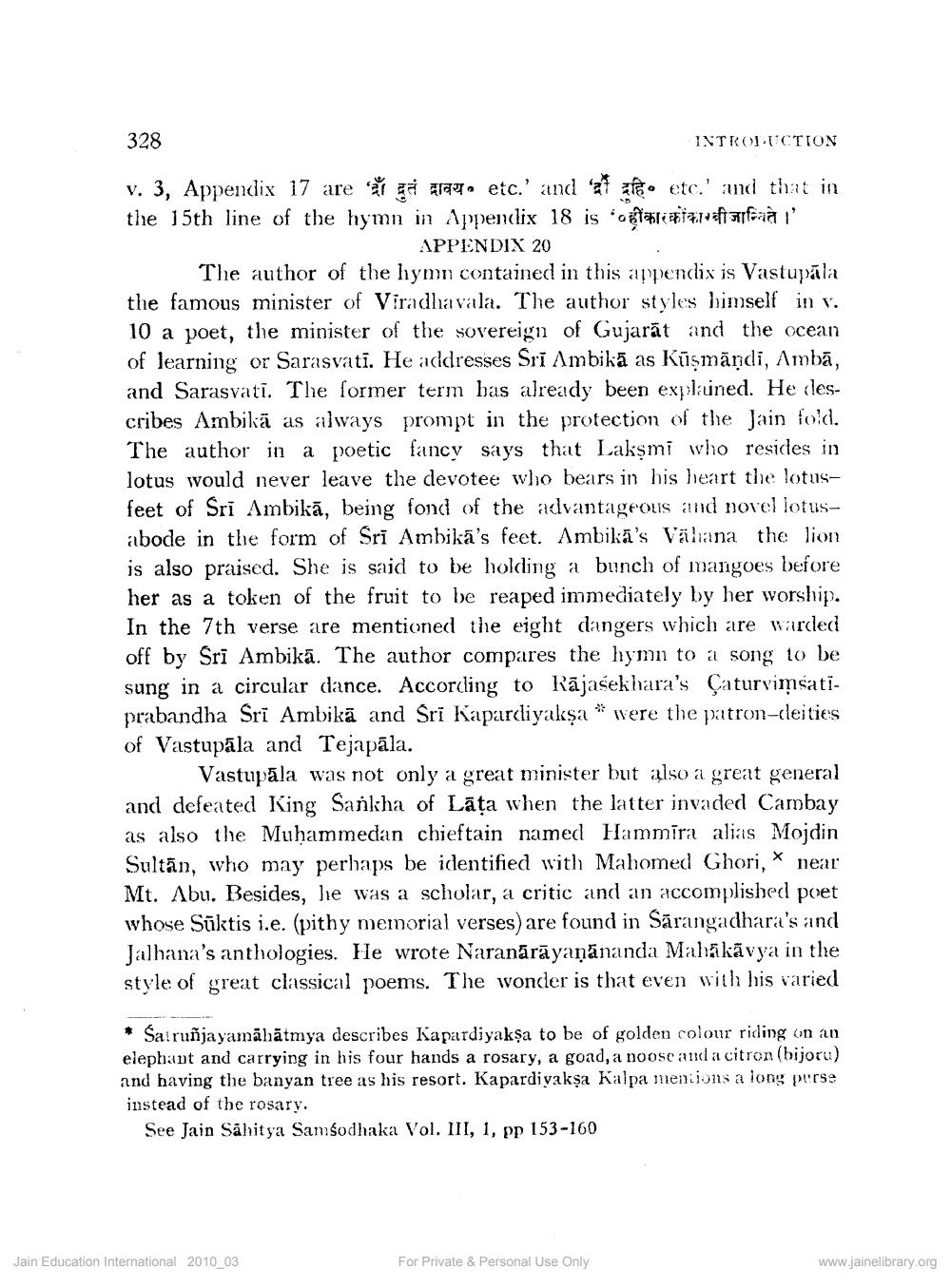________________
328
INTRODUCTION
v. 3, Appendix 17 are a tal, etc.' and '21 ao etc. and that in the 15th line of the hymn in Appendix 18 is organiza eff arfaat i
APPENDIX 20 The author of the hymn contained in this appendix is Vastupāla the famous minister of Viradhavala. The author styles bimself in y. 10 a poet, the minister of the sovereign of Gujarat and the ocean of learning or Sarasvati. He addresses Sri Ambikā as Kūsmāndi, Ambā, and Sarasvati. The former term has already been explained. He clescribes Ambikä as always prompt in the protection of the Jain fold. The author in a poetic fancy says that Lakşmi who resides in lotus would never leave the devotee who bears in his heart the lotusfeet of Sri Ambikā, being fond of the advantageous and novel lotusabode in the form of Sri Ambikā's feet. Ambikā's Väliana the lion is also praised. She is said to be holding a bunch of mangoes before her as a token of the fruit to be reaped immediately by her worship. In the 7th verse are mentioned the eight dangers which are warded off by Sri Ambikā. The author compares the hymn to a song to be sung in a circular dance. According to Rājasekhara's Çaturvimsatiprabandha Sri Ambikā and Sri Kapardiyaksa * were the patron-cleities of Vastupāla and Tejapāla.
Vastupāla was not only a great minister but also a great general and defeated King Sankha of Lāta when the latter invaded Cambay as also the Muhammedan chieftain named Hammira alias Mojdin Sultân, who may perhaps be identified with Mahomed Ghori, * near Mt. Abu. Besides, he was a scholar, a critic and an accomplished poet whose Sūktis i.e. (pithy memorial verses are found in Sārangadhara's and Jalhana's anthologies. He wrote Naranārāyanānanda Mahākāvya in the style of great classical poems. The wonder is that even with his varied
* Śatruñjayamāhātmya describes Kapardiyakşa to be of golden colour riding on an elephant and carrying in his four hands a rosary, a goad, a noose and a citron (bijoru) and having the banyan tree as his resort. Kapardiyakşa Kalpa mencions a long purse instead of the rosary.
See Jain Sahitya Samsodhaka Vol. III, 1, pp 153-160
Jain Education International 2010_03
For Private & Personal Use Only
www.jainelibrary.org




